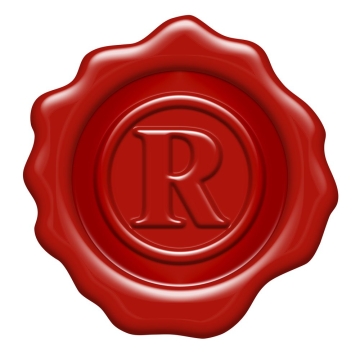Territory
The registration grants exclusive rights on the trademark in the entire Italian territory (for a total of roughly 324,000 square kilometers and about 60 million inhabitants) and in the State of San Marino and may be recognized in the Vatican City.

Registrable Trademarks
All signs (words, devices, letters, digits, shapes) are registrable as trademarks upon condition that they are capable of being represented in the register in such a way as to allow the competent authorities and the public to determine the object of the protection clearly and precisely, and that they fulfil the requirements of novelty, distinctiveness and lawfulness.
Types of Marks
The types of registrable marks are product marks, service marks, collective marks, certification marks, shape marks (three-dimensional), word marks, figurative marks, complex marks (including figurative and word elements), position marks, pattern marks, colour marks (a single colour or a combination of colours), sound marks, movement marks, multimedia marks, holographic marks.
Priority
It is possible to claim the priority of an earlier national first filing in any member state of the Paris Convention of World Trade Organization within 6 months running from the date of application. A first application for an Italian trademark can be the basis for a priority claim when subsequent applications for the same trademark are filed in other states party to the Paris Convention or World Trade Organization.
Who May Apply for an Italian Trademark
Any natural or legal person who is a citizen or resident of a member state of the European Union, of the Paris Convention or of the World Trade Organization, or of a state guaranteeing reciprocity of treatment, may apply for an Italian trademark.
Only legal persons under public law and associations of manufacturers, producers, service providers or traders, excluding limited companies, can apply for registration of collective marks.
Natural or legal persons, including institutions, authorities and bodies accredited pursuant to provisions of law concerning certification guaranteeing of the origin, nature or quality of certain products or services, upon condition that they are not suppliers of the products or services of the certified type.
Trademark Attorneys
Applicants may only be represented professionally by qualified trademark attorneys holding membership in the Italian Industrial Property Consultants Institute, or by attorneys-at-law.
Where to File the Application
Trademark applications may be filed in Italy, at the Provincial Offices of the Ministry of Industry or at the Italian Patent and Trademark Office (IPTO).
Effects of the Application
An Italian trademark enjoys protection from the day the application is filed. It is therefore possible, from the day the application is filed, to obtain measures against any infringement of the trademark.
Examination
The IPTO carries out an examination of distinctiveness, lawfulness and lack of deceptiveness.
Trademark Searches
No search is carried out by the IPTO to determine whether prior registrations or applications exist for similar or identical trademarks.
Opposition
As of 1 July 2011 it is possible to file oppositions against Italian trademark applications filed as from 1 May 2011 as well as against International registrations designating Italy published in the Gazette of the World Intellectual Property Organization as from 1 May 2011.
Oppositions must be filed within three months running from the publication of the application for registration.
In the case of international registrations designating Italy, the three months start running on the first day of the month following the publication of the international registration in the Gazette of the World Intellectual Property Organization.
Registration
The certificate of registration is obtained 6 to 9 months after filing, if the application is not rejected or opposed.
Rights Conferred by the Registration
An Italian registration confers exclusive rights on the trademark in the entire Italian territory.
Classification
The international classification of goods and services (the Nice Agreement) applies. Applications may include more than one class of goods and/or services. Products and services for which protection is sought must be identified by the applicant with the clarity and precision necessary to allow the competent authorities and economic operators to determine, exclusively on such a base, the scope of the protection sought.
Duration and Renewals
Trademarks are valid for 10 years running from the filing date. An indefinite number of renewals is possible for subsequent 10-year periods.
Use of a Registered Trademark
Lack of use of an Italian registered trademark continued for 5 years following its registration can cause a trademark to lapse.
Incontestability
The owner of a prior trademark who has knowingly tolerated the use of a later registered trademark for a period of 5 consecutive years or more can no longer request that the later mark be declared invalid or oppose its use.
Prior Use
Under certain conditions, prior use of a trademark is recognized and protected.
Assignment
Assignment of a trademark can take place separately from the enterprise, and for part of the goods and/or services.
Licensing
Licensing is permitted for all or part of the goods and/or services and for part of the Italian state’s territory.
Marking
The use of symbols indicating that the trademark has been filed or is registered is optional.
Customs Protection
Am Italian trademark application or registration gives the owner the right to request customs protection, involving the seizure of counterfeit products at customs.
Applicable International Agreements
The Paris Convention, the Madrid Agreement and the Protocol relating to the Madrid Agreement, the TRIPs Agreement (World Trade Organization members), the Nice Agreement Concerning the International Classification of Goods and Services for the Purposes of the Registration of Marks.
